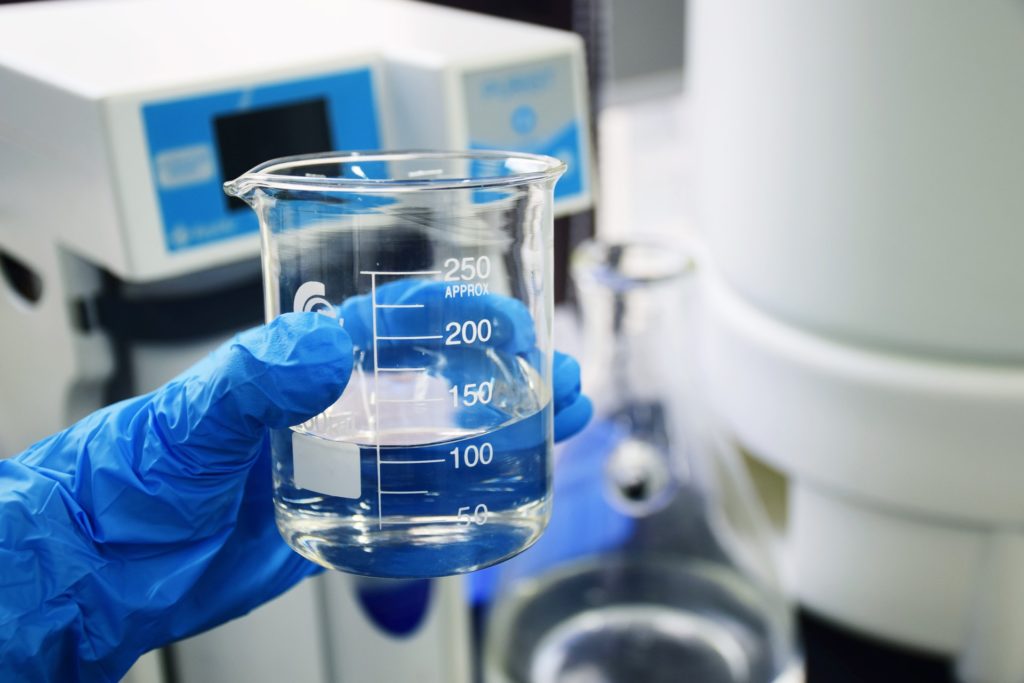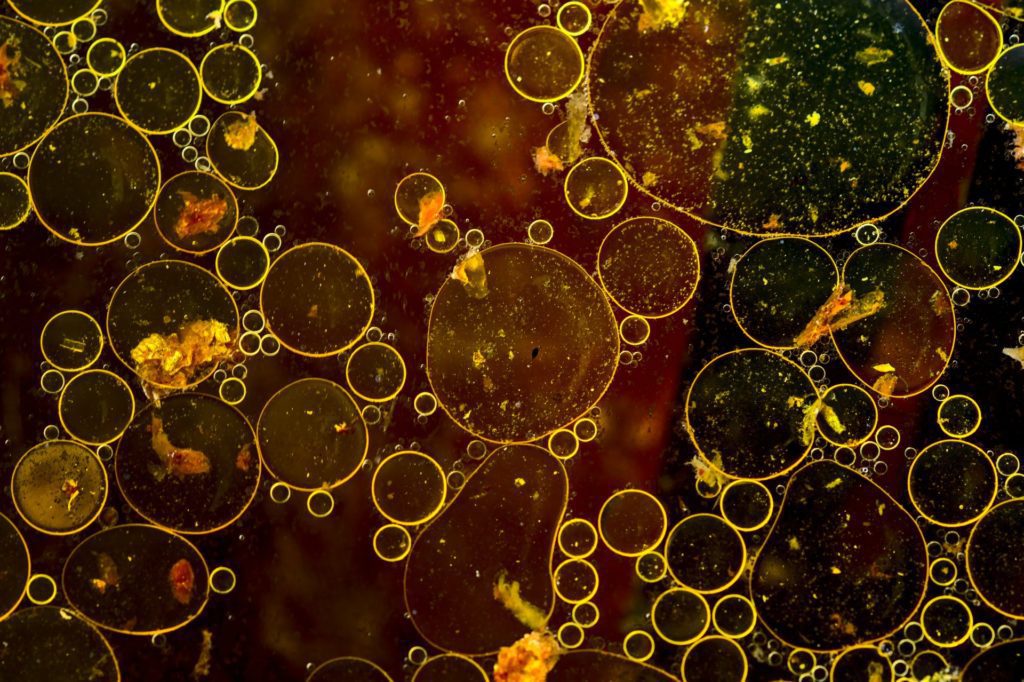07/25/2022 | Industrial Wastewater | 8 MINUTE READ
Managing Water Usage in Petroleum Refineries

Petroleum refineries are highly important industrial process plants that refine petroleum into a wide range of different products, which include everything from gasoline and diesel fuel to kerosene and heating oil. The refining process uses a considerable amount of water. How much water a refinery uses largely depends on the processes that are performed.
A few of the more common refinery configurations used for processing crude oil include cracking as well as light and heavy coking. These processes are known to use anywhere from 0.34-0.47 barrels of water for every barrel of crude oil. In comparison, the production of gasoline consumes upwards of 0.60-0.70 gallons of water for every gallon of gasoline. The petroleum refinery process that consumes the least amount of water is jet fuel refining, which only uses around 0.09 gallons of water.
Before water can be used in petroleum refineries, these facilities are first tasked with treating the water to make sure that contaminant levels are low. While there are many different types of sensors that can detect the presence of contaminants in water, the most common option involves toroidal conductivity sensors. If the sensor provides you with a high conductivity reading, this indicates that the water is contaminated and needs to be treated.
Total water use in a petroleum refinery is monitored with a control room and equipment that’s set up in and around the piping system. Contaminant levels can be monitored with conductivity sensors, pH sensors, dissolved oxygen sensors, and oxidation reduction potential sensors. The following is an extensive guide on how to manage and effectively reduce water usage in a petroleum refinery.
Water Management and Reuse in Petroleum Refineries
Most of the water that’s used in a petroleum refinery is used for cooling purposes. Refining petroleum into different types of products results in a considerable amount of heat production, which can lead to issues with the machinery and equipment. Cooled water is necessary to keep temperatures reasonable. While most water is used for cooling purposes, it can also be used for boiler feed water, fire protection, sanitary services, and processing.
As touched upon previously, contaminated water is detected in petroleum refineries with toroidal conductivity sensors. While other types of water quality sensors can be used, toroidal conductivity sensors directly indicate how much contaminants are currently present in a water sample. These sensors are comprised of a transmission coil alongside a reception coil, which are able to determine what conductivity the water has. High conductivity readings indicate that the water still needs to be treated.

Water Management Best Practices in Petroleum Refineries
If a petroleum refinery wants to make sure that their operations are efficient and properly managed, these facilities should adhere to some best practices when it comes to managing water use. The following details how to effectively manage everything from desalter water to process water. Keep in mind that these water streams can be treated for standard use as well as reuse, the latter of which allows petroleum refineries to reuse their water and save a considerable amount of money in the long run.
Desalter Water
Desalter water is a byproduct of washing raw crude oil before topping. It’s initially used in the production field before cleaning up crude oil. Water content specifications for this water are precise to mitigate the negative effects that occur in downstream processes from corrosion and similar issues.
There are many best practices a petroleum facility can employ to manage desalter water use and make sure that the water isn’t too contaminated. These practices include:
- Fresh water should never be used as wash water during the desalter process
- The pH levels should be set to right around 6-7 in the desalter
- The ideal water to use for the wash water is phenolic sour water
- Desalter brine should be diverted to a completely separate tank to facilitate the removal of solids
- The right interface probes should be used to separate oil and water

Sour Water
Sour water involves any water that’s used for fractionating and steam stripping processes. Sour water typically consists of hydrogen sulfide and ammonia, both of which will be need to be properly removed before reusing the water. It’s common for refineries to outfit sour water strippers with trays to effectively remove contaminants.
The main problems with sour water strippers that petroleum refineries must be on the lookout for include fouling, corrosion, and foaming. By cleaning the trays and removing contaminants from the water, shutdowns should be kept to a minimum. The best practices to keep in mind with sour water include:
- Make sure that sour water is routed directly to the sour water stripped unless it’s being used as desalter wash water
- Any water that’s stripped from the phenolic stripper should be used on occasion for desalter wash water
- Any sour water that’s produced in a coker or catalytic cracker should be processed directly in a phenolic sour water stripper
- Make sure that any stripped sour water is cooled before being discharged for wastewater treatment, which ensures that the treatment system isn’t subjected to exceedingly high temperatures

Process Water
Process water involves any water that’s used to maintain reliable and efficient production in a petroleum refinery. The types of processes that this water is used for include regenerating catalyst, product washing, and dehydrogenation reactions. Meeting the right process water requirements is necessary to make sure that high production standards are maintained, which will also help to keep costs down.
In most cases, process water is sourced from municipal treatment plants, groundwater, or surface water. The water that’s taken from these sources must be treated to get rid of minerals and contaminants that would otherwise cause extensive damage to equipment. The most important thing to remember with process water is to take steps to remove contaminants before using the water. To make sure that most or all contaminants are removed, the water quality should be tested before and after treatment occurs.
Spent Caustic
Spent caustic results from the extraction of various acidic compounds, which are themselves difficult to properly treat and reuse. This solution has become fully exhausted and can no longer be used in a petroleum refinery. Keep in mind that spent caustics consist of potassium hydroxide or sodium hydroxide as well as water and different types of contaminants. These contaminants have consumed most of the hydroxide, which causes the caustic to be spent. Best practices for spent caustic include:
- Two types of spent caustic are produced in refineries, which extend to sulphidic spent caustic and phenolic spent caustic. Sulphidic spent caustic can be treated in a wastewater treatment plant. On the other hand, phenolic spent caustic is unable to be treated in a wastewater facility because of its odor. This caustic should be separated from any sulphidic spent caustic before being stored in a different container, which allows the refinery to identify how to dispose of it.
- The total amount of spent caustic that’s produced largely depends on what operating procedures are maintained in the refinery. It’s common for these procedures to require caustic to be properly purged at the right moment.
- Think about washing hydrocarbons with a certain amount of stripped sour water to lower the amount of acidic compounds that exist in the streams. The hydrocarbons can then be sent to a caustic treatment system. By reducing the concentration of acidic compounds, the discharge of spent caustic should also be kept to a minimum.
Tank Bottoms
Sediment and water can build up in raw crude tank bottoms and should be removed periodically. The best practices that a petroleum refinery should use in this situation include:
- Make sure that the right valves and piping are installed to facilitate proper drainage
- Outfit the tank with the right instrumentation to monitor oil and water concentrations
- In the event that excess oil is still sent to the sewer, an operator should remain at the tank while the drainage period is ongoing

Blowdown Water
Blowdown water is cooling tower water where impurities build up while water evaporates. This type of water involves any water that’s drained directly from cooling equipment to ensure that mineral buildup is kept to a minimum. The cooling equipment that should use this type of water in a petroleum refinery is a cooling tower.
These systems use water evaporation to obtain the cooling effect, after which mineral concentrations in the remaining water will increase. If this water isn’t effectively treated, the higher mineral concentrations will lead to scaling, which may damage the system. This type of water is commonly dumped into a wastewater drain but can be reused for specific uses. Best practices for blowdown water include:
- When hydrocarbon is detected, make sure that the cause of the leak is identified and repaired quickly
- Monitor the circulation loop in the cooling tower for hydrocarbons
- Route the blowdown water to oil and water separation systems for wastewater treatment
Byproducts of Water Treatment Methods
When water treatment occurs in a petroleum refinery, many different byproducts can occur from the treatment methods that are used. In fact, byproducts result from ion exchange regeneration, reverse osmosis, and sludge dewatering processes. Keep in mind that these byproducts can be inorganic, organic, or chemical substances. Petroleum refineries should properly collect and dispose of any byproducts that are produced while water is being treated.
Petroleum refineries invariably consume high amounts of water during standard operations, when cleaning equipment, and when treating process water. The best practices mentioned above are designed to help facilities reduce the amount of water they use, which will keep costs down and protect the environment.
Posted by Dominic O'Donnell on July 25, 2022
Sensorex is a global leader in the design and manufacture of quality sensors for water quality and process applications. The company offers more than 2000 sensor packages for pH, ORP, conductivity, dissolved oxygen, free chlorine, chlorine dioxide, UV transmittance and other specialty measurements, as well as a full line of sensor accessories and transmitters. Its expert technical support engineers solve analytical sensor challenges with custom designs and off the shelf products.




